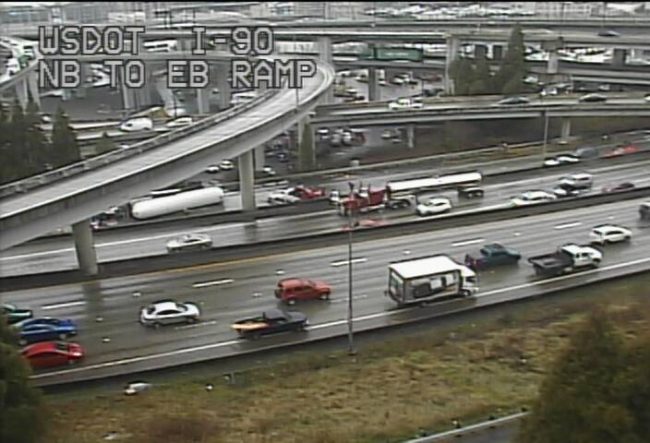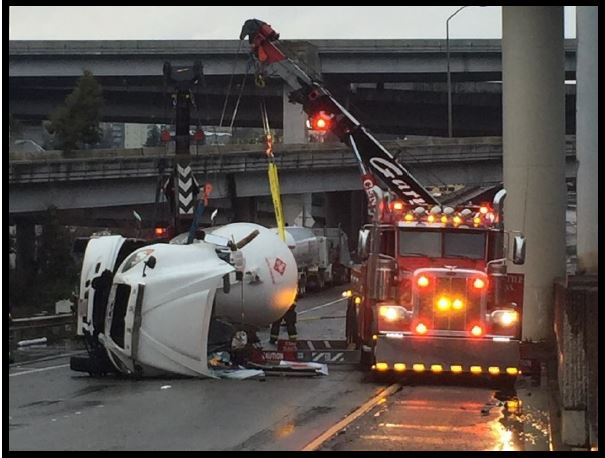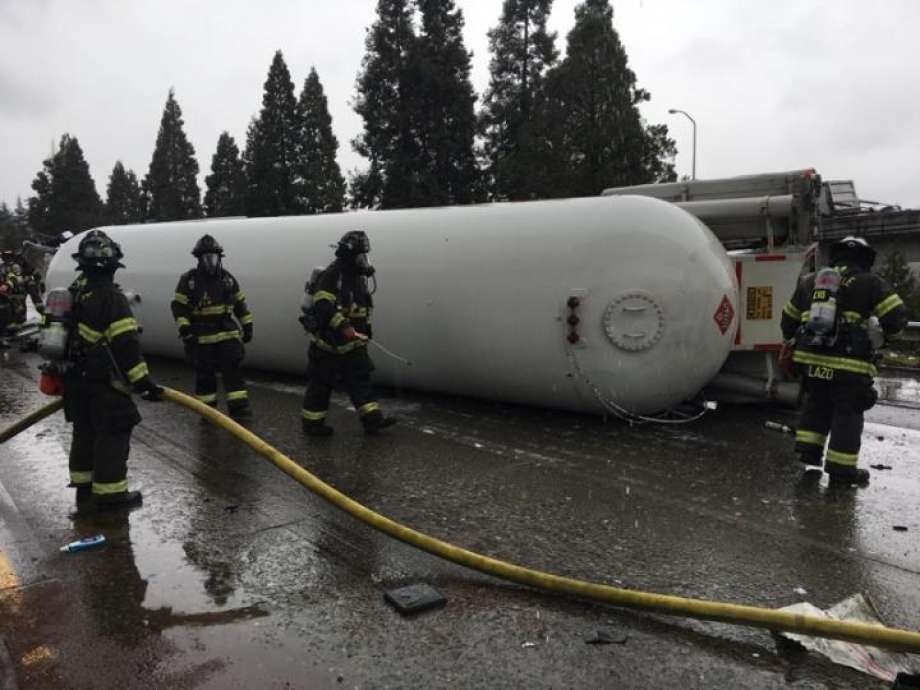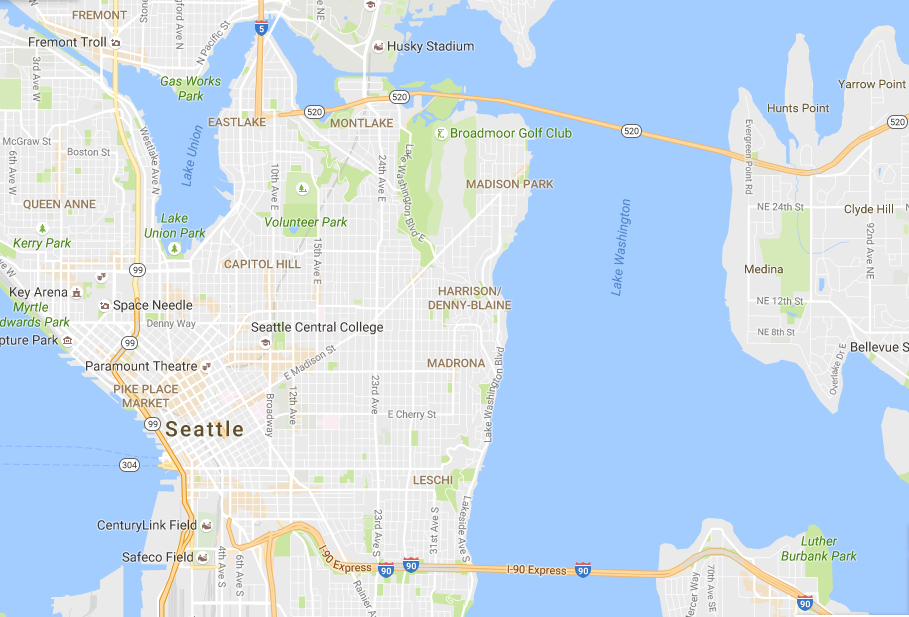Monday was quite the ordeal. Around 10am a propane truck got into a collision and rolled over blocking an interchange between I-90 and I-5 near Downtown. Propane being highly flammable, authorities had to shut down I-90 and I-5 in case the already heinous crash turned into a fireball. The propane in the truck had to be transferred to another truck before the beached truck could be towed. As a result, these sections of I-5 and I-90 were closed eight hours, and, as you’d expect, afternoon commute was horrific with traffic barely moving as everyone at once sought alternatives to I-5 and I-90. Buses–even ones that don’t use the freeways–got caught in the congestion crossfire and many reported being more than 40 minutes behind schedule on OneBusAway.
What should be learn from this traffic meltdown?
A few smart alecks suggested to me, the author of an article on removing I-5 in Downtown, that this propane-truck-induced traffic nightmare shows my idea to remove I-5 in Downtown Seattle to be extremely silly. Monday’s standstill would be what every afternoon commute would be like without I-5, they wise guys contend. On the contrary, the traffic meltdown showed why I-5 is such a liability for Seattle, and why removing I-5 between I-90 and SR-520 is a wise move.
Removing I-5 Isn’t Analogous to an Unexpected Traffic Meltdown
Monday’s traffic meltdown isn’t analogous with what a planned I-5 removal Downtown would look like.
First of all, since the collision happened after the morning commute: Downtown was able to absorb way more cars than it was able to handle in the afternoon with I-5 shut down. In a removal scenario, the morning and afternoon capacity would be the same; so, there wouldn’t be this inbalance between the amount of cars our highway network could support in the morning before a crash takes out the network’s cornerstone in I-5.
Second, a planned removal would take place after East Link, Lynnwood Link, and Federal Way Link and I-405 BRT go online. That means transit capacity and quality would go way up, allowing the transportation system to handle the increased demand.
Third, a removal would likely include a boulevard to replace some of the vehicle capacity and feed SR-520, I-5 north of the Ship Canal, I-90, and I-5 south of the stadiums. Removing I-5 wouldn’t block the I-90 on-ramps like the propane truck did, and, by restoring the street grid, a removal would make the network much more resilient in the event of a major collision shutting down one route. More east-west routes through the city would exist if the I-5 trench didn’t preclude them, easing the strain Denny Way and Mercer Street bear every day to feed I-5 on- and off-ramps. By putting nearly all of our eggs in one basket, we invite disaster.

If anything, the flipped propane truck that caused Traffic Armageddon on Monday showed the folly of downtown freeways in that they make the network very brittle and prone to catastrophic failures when something goes wrong. Removing I-5 in Downtown would limit spillover damage where bus riders are forced to suffer when car traffic spills onto their routes following freeway backups.
A Downtown Seattle without I-5
Let’s imagine what the transportation system downtown would look like without I-5. First of all, no one route would be so crucial that a collision would knock out the entire system. Light rail would handle much more of the load, providing more commuters with a more resilient option mostly free of the whims of traffic congestion. And most importantly, the city would be more pleasant and enjoyable place to be. After all, the city is first and foremost for its residents–who’d hope to breathe clean air and stroll along the streets–not for the motorists who’d hope to blast through its center at 70 miles per hour.
Removing I-5 would reconnect Capitol Hill and South Lake Union, Downtown and First Hill, and Chinatown-International District with itself. Streets severed by I-5–like Union, John, Harrison, Republican, Mercer, and Roy–could be reconnected. I-5’s absence and an increase in alternatives would make streets that already cross I-5 flow better, Denny Way comes to mind as host of the oft-late Route 8 bus. Madison Street also would be helped by the I-5 viaduct coming down, lessening ramp traffic that would impede the Madison Bus Rapid Transit project planned for 2019.
The featured image was taken by Seattle Fire Department and posted on its Fireline Blog.
Doug Trumm is publisher of The Urbanist. An Urbanist writer since 2015, he dreams of pedestrian streets, bus lanes, and a mass-timber building spree to end our housing crisis. He graduated from the Evans School of Public Policy and Governance at the University of Washington in 2019. He lives in Seattle's Fremont neighborhood and loves to explore the city by foot and by bike.




